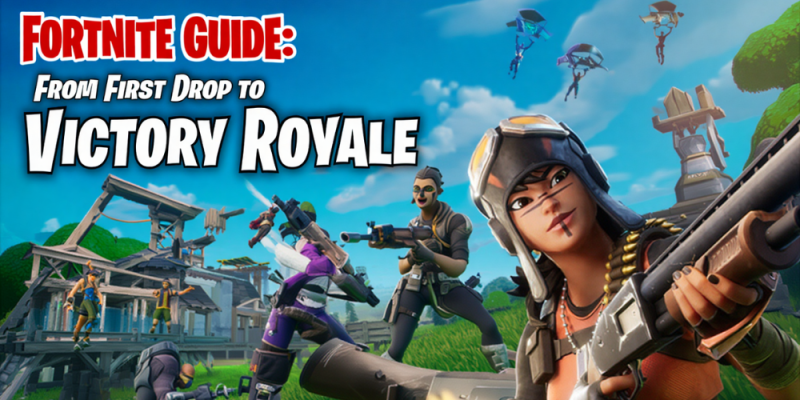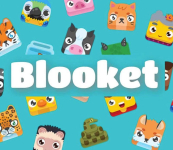Fortnite Guide: From First Drop to Victory Royale
2025-10-06

Fortnite is fast, colorful, and full of surprise moments. Whether you like building towers or fighting without builds, the game rewards smart choices and quick reactions. This friendly guide will help you understand the basics and give you simple steps to win more.
You will learn how to set up your controls, choose a landing spot, fight better, rotate safely, and finish games strong. The tips work for both Zero Build and Build modes, and for solo or team play.
Getting Started: Settings and Controls
Good settings make the game feel smooth and predictable. Aim and movement depend on stable performance and comfortable controls. Spend 10–15 minutes here; it pays off in every match.
- Turn on Visualize Sound Effects (Settings > Audio). Footsteps, chests, and shots appear on your screen. This is powerful for awareness.
- Set frame rate as high and stable as possible. On PC, use Performance Mode or lower graphics for more FPS. On console, use 120 FPS mode if available.
- Pick a sensitivity you can control in close and mid range. If you over-aim or under-aim, lower it slightly. Small changes are better than big jumps.
- On controller, tune aim assist and deadzones so your aim is smooth, not jittery. On mouse, lock your eDPI (DPI × in-game sensitivity) and keep it consistent.
- Bind keys or buttons for quick access: build/edit (for Build mode), crouch, jump, reload, inventory, and your preferred weapon slots.
Keep your binds simple. If you need two hands to press a button in a fight, change it. Comfort beats complexity, especially under pressure.
Game Modes and Core Basics
There are two main ways to play: Zero Build and Build. In Zero Build, movement, aim, cover, and utility items matter most. In Build, you also need to place structures, edit, and control space with materials.
- Health and shields: You have 100 HP and up to 100 shields. Always carry shields. Minishields (small pots) are fast; big shields give more but take longer.
- Rarities: Common to Mythic. Higher rarity usually means stronger weapons or faster reloads. Upgrade when safe, but do not risk your life for one tier.
- Storm: The safe zone shrinks. Plan paths early to avoid running late. Getting caught by the storm hurts and attracts third parties.
- Sound and line of sight: Sound gives direction; cover blocks sight. Use both to avoid ambushes and to surprise enemies.
Fortnite changes each season: map, loot, and items. Learn the current map points of interest and test new items in safe fights before relying on them.
Smart Landing and the Early Game
Your landing sets the tone. A good drop gives weapons, shields, and a clean way to rotate. A bad drop gives chaos and panic. Plan before the Battle Bus reaches your target.
- Pick a spot with 3–5 loot sources: chests, floors, coolers, or fishing. Know where they are. Practice the same 2–3 drops until they feel easy.
- Land first at a weapon spawn. Drop lower by diving straight down and gliding late. A fast gun beats a late better gun.
- Shield first, then hunt. Pop minis as soon as you can. If you hear a push coming, use cover and hold angles.
- Third-party smartly. If two teams fight nearby, wait for cracks or knocks, then clean up. Do not run in early and become the free elimination.
After you clear your area, reload, upgrade if it is safe, and move toward zone using cover. Avoid open fields unless you have mobility.
Combat Fundamentals: Aim, Movement, and Peeking
Most fights are won before the first bullet hits, with good crosshair placement and smart peeks. Keep your crosshair at head level when you expect someone. Do not sprint around corners; crouch-walk or pre-aim.
- Right-hand peek: In Fortnite, peeking from the right side gives more vision with less exposure. Try to place cover so you peek right.
- Shoulder swapping: If you are stuck with a left peek, reposition your body or place a new piece to create a right peek.
- Movement: Slide to break aim assist or tracking, jump only when safe (jumping can ruin your aim), and keep moving unpredictably in Zero Build.
- Shotgun timing: Wait half a beat for a clean shot. A missed pellet hurts more than a slow but accurate shot.
- Spray control: Burst your AR or SMG at mid range. Full spray only at close range or when breaking structures.
Short practice helps. Spend 5 minutes on aim trainers or creative maps: 2 minutes tracking, 2 minutes flicks, 1 minute shotgun timing. Consistency beats long, rare sessions.
Building Essentials (for Build Mode)
Building is about safety first, angles second, style last. You do not need flashy moves. Learn the small set of builds that keep you alive and give simple peeks.
- Ramp + wall for pushes: Place a wall in front of your ramp to block incoming shots as you move forward.
- Box up: Four walls, a roof, and a floor. Use it to heal, reload, or reset. Double box when pressured.
- Protected peek: Edit a window or a right-side corner on your wall to get a safe angle. Reset the edit fast if you get tagged.
- Retakes: If you lose high ground, place a floor and cone above you, then side-ramp with walls. Keep your body behind pieces as you climb.
- Peace control basics: Place walls and a cone around an opponent before they do. This limits their movement and gives you edit control.
Practice edits slowly first: wall window, wall corner, floor + cone holes. Speed will come. Always replace enemy pieces before editing. Never swing an edit if you do not hold the piece.
Rotations, Positioning, and Endgame
Midgame is about moving from fight to fight without getting trapped in the open. Plan a route along natural cover: hills, buildings, trees, rocks. In Zero Build, cover is your best friend; in Build, materials are your safety net.
- Rotate early from edge zones. Late rotations draw attention and put you between teams.
- Use elevation. High ground gives vision and free tags. Do not tunnel vision on eliminations; protect your position.
- Endgame discipline: In Build, tarp safely (floors, walls, cones) and refresh materials from boxes of eliminated players. In Zero Build, move cover to cover and hold power spots.
- Heal off: If both teams are weak and zone is closing, a stack of heals (like Med-Mist or Slurp-type items) can win the last circle.
Remember, the goal is the Victory Royale, not the highlight clip. Do not open wide edits or run into open ground just for one more elimination.
Team Play and Communication
In Duos and Squads, the team that talks clearly and focuses the same target usually wins. Keep callouts short and useful.
- Call position: “One on me, southwest, close.”
- Call status: “Cracked, 50 HP white.”
- Call action: “Beam this guy, right peek, 3-2-1.”
- Share loot: Balance shields, heals, and ammo. One weak teammate can lose a fight.
- Play trades: If a teammate goes down, get a return knock or disengage and reset. Do not feed one by one.
Use map markers and pings. Mark enemy paths, loot, and rotation routes. Agree on a play before moving.
Loadouts, Items, and Simple Economy
Your loadout should cover close, mid, mobility, and sustain. Do not hold five weapons; hold what you can use well and fill gaps.
- Balanced (Zero Build): Shotgun + AR/DMR + SMG or pistol + mobility (shockwaves, grappler, launch pads) + shields/heals.
- Balanced (Build): Shotgun + AR/SMG + utility (harpoon/Thunder Pump items vary) + two stacks of heals or mobility.
- Flex slot: Swap based on circle and team roles. One player can carry extra heals; another carries more mobility or utility.
Sometimes the game includes upgrade benches, NPCs, vaults, or gold bars. Use them if safe, but never waste time upgrading while enemies are nearby. Safety first, upgrades second.
Practice Plan: Improve Fast with Less Time
You do not need hours every day. Short, focused practice builds skill faster than random play. Try this 20-minute warm-up:
- 5 minutes aim trainer or creative map (tracking, flicks, shotgun drills).
- 5 minutes edit course at 70% speed. Focus on clean movement, not rush.
- 5 minutes piece control and protected peeks vs. bots or in a private map.
- 5 minutes realistic fights or box fights to connect skills.
Then play your matches. After each game, ask one question: What was the first mistake that led to the loss? Fix that in the next match. Small fixes stack up quickly.
Common Mistakes to Avoid
- Hot-dropping without a plan. Practice safe drops to build confidence.
- Fighting in the open. Always create or use cover.
- Chasing too far. If a fight pulls you into storm or third parties, reset.
- Over-looting. Two stacks of shields and one of heals are enough. Move early.
- Reloading at bad times. Duck behind cover or build first, then reload.
- Greedy edits (Build). If you do not own the piece, do not edit-fight inside it.
- Ignoring audio. Turn on Visualize Sound Effects and trust the indicators.
- Changing sensitivity often. Pick a value and keep it for a week.
Conclusion
Fortnite rewards calm plans and simple, repeatable plays. Set your controls, learn two safe drops, carry a balanced loadout, and rotate early with cover. In fights, use right-hand peeks, move smart, and pick the best moment to push. In endgame, protect your position and play for the win, not for style.
- Focus on one improvement each session (landing, peeks, or rotations).
- Stay flexible: the map and items change, but core skills stay the same.
- Have fun and reset after losses. A clear mind wins more fights.
Stick to these habits, and your Victory Royales will come more often—no matter the season, mode, or lobby.




